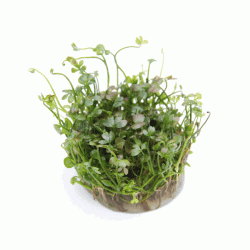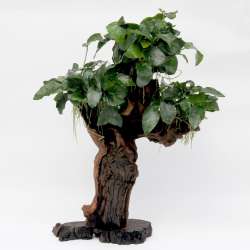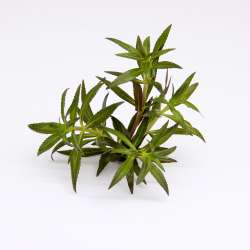Mittel

Ludwigia repens ‘Rubin’
 Lighting
Lighting
 Color
Color
 Position
Position
 22 - 28 °C
Temperature
22 - 28 °C
Temperature
 CO2
CO2
 50 cm
Growth
50 cm
Growth
Family:
Onagraceae
Species:
Ludwigia
Type:
This colour variant has been commercially available for almost 10 years, and is one of the most attractive red-leaved aquarium plants. Generating such rich, red tones requires strong lighting and a good supply of CO2. In these conditions, the leaf pairs are very closely arranged on the stems, and the plants appear very compact. A group of around 10 stems mixed with light green varieties is like watching a fireworks display under water!
















